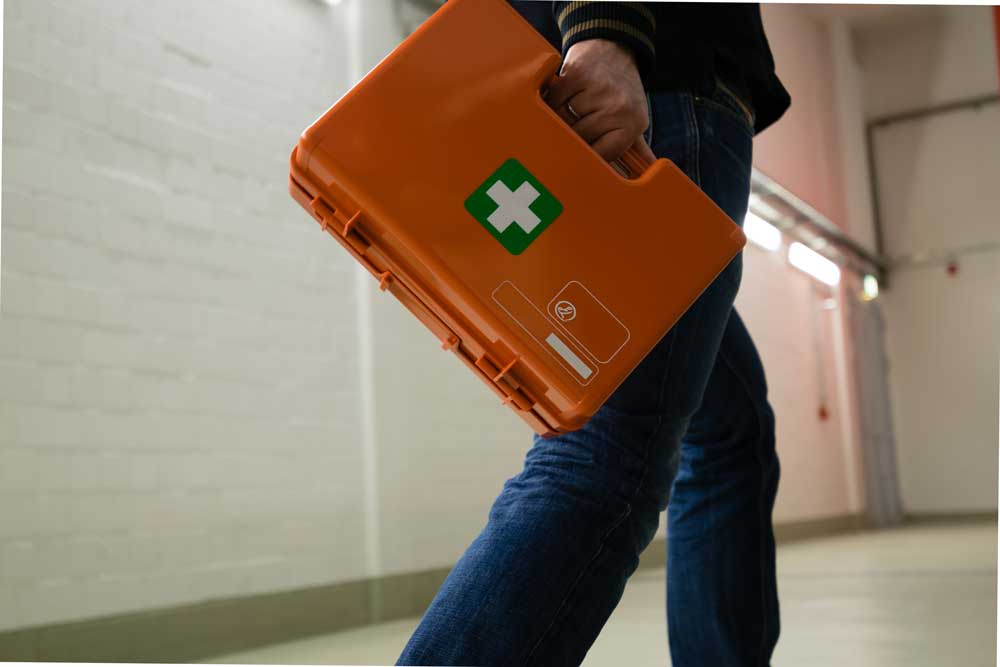
02 Nov First-Aid Basics
Protecting someone’s life, whether that be securing their person, their assets, or their business, is no small matter. People look to security companies to keep them safe from an ever-increasing number of threats and expect their bodyguards to be able to anticipate dangers of all kinds.
At CBI Security, we couldn’t agree more. Everyone you hire for security, from the night security guard to the on-site security analyst, should be aware of gaps in the safety net and how to seal them back up. As such, we have a comprehensive suite of services designed to prevent any and all types of threats.
But what if the worst does happen and people are hurt? Is a security detail of use then, after the threat is over? With every one of our officers receiving first-aid training and over 20% qualifying as full-fledged EMTs, we think so.
First Things First
When there’s a crisis and people have been injured, a few things have to happen in quick succession in order to administer first-aid. At CBI, we know that having the proper training and experience can save a person’s life. Not only will the EMT know how to give the right kind of help but they will be able to make wise and deliberate decisions right there, on the scene.
As such, we hold each person on our staff to the highest standards as outlined by the American Red Cross. They have outlined a few crucial steps to remember when administering first-aid, which we follow to the letter.
Step One: Secure the Scene
It might seem obvious for someone who is away from harm to make sure the area is secured, but in the moment of crisis, we rely on security companies to keep cool and remember what to do when everyone else forgets. It is the job of both armed and unarmed guards to ensure that any threats are gone and that it’s okay to tend to the wounded.
Part of securing the area is taking in the entirety of the scene and making wise assessments about what needs to be done. An EMT must determine:
- If the scene is safe to enter
- If anyone is in critical or life-threatening condition
- How many people require emergency care
- If additional help is needed and/or available
Having considered these questions, our trained bodyguards can get to work helping the injured person.
Step Two: Checking the Patient
As anyone who has taken a first-aid course likely remembers, there are protocols in place for whether a person is lucid or unconscious. While attending to either, an officer may ask someone to call an ambulance and run to retrieve any medical supplies that are at hand. Meanwhile, they will be assessing the condition of the patient.
If the injured person is conscious:
- Secure permission from the patient to administer aid.
- Conduct a brief interview about their condition, their symptoms, and any relevant medical information, including a list of their medications and recent medical history.
However, if the person is unconscious:
- Shout the person’s name to get their attention.
- Gently touch them on the shoulder or, if they’re an infant, on the foot.
- Check for signs of breathing for no more than 5 – 10 seconds.
As these checks are going on, our security guards are trained to perform a head-to-toe check to get a full grasp on the total injuries sustained.
Step Three: Take Action
The Red Cross sums up this step with a single sentence: “Provide care consistent with knowledge and training according to the conditions you find.” As security companies such as CBI Security beef up their EMT training, the sphere of knowledge and training that could be used to help people will naturally grow.
Some of these life-saving measures include:
- Administering CPR
- Using an AED (defibrillator)
- Make sure airways are open and free of foreign objects
Your bodyguard should do just that — protect your body. That includes providing critical care after an injury until emergency services can arrive. With CBI, you can rest easy knowing that the latest and most comprehensive training has been carried out by our officers.





Sorry, the comment form is closed at this time.